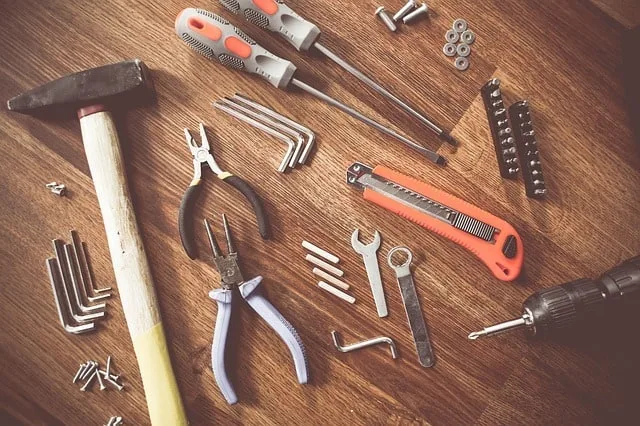Most homes, however old or modern, are very rarely built with ease of repair in mind.
Construction companies will assume that most people will get help if they want to make changes or to fix their property, enabling them to take advantage of the array of tools a professional like this will have.
While this makes it nice and easy to find people to work on your home, it will create a challenge when it comes to DIY, especially if the job you’re trying to do is in a hard to reach spot. To help you out with this, this post will be exploring some of these spaces to give you the chance to work on them for yourself.

Crawl Spaces
It can be a challenge of construction teams to make homes which sit flush with the ground they are on top off.
With most land being uneven, and temperature problems emerging when floors are in direct contact with it, most properties have areas which are known as crawl spaces underneath their floors.
As long as they are dry, spots like this can make an excellent storage area. Of course, though, along with this, the home’s piping and electrical wiring can find its way into this area, giving you are easier access than when they’re in the walls.
There are plenty of reasons to want to get into the crawl spaces around your home, especially when another part of the place’s infrastructure needs to have work done on it.
Accessing these areas can often be easy, with built-in cupboards opening the way to them. Sometimes, though, you may have to look into removing floorboards to achieve this goal, and this is worth doing extremely carefully, as you can easily damage them when they are being pulled up.
Once you get down there, you may need a torch to be able to see, but that should be it. Of course, this may not be the ideal place for someone suffering from claustrophobia.
Cavity Walls
Along with having gaps between the floor and the ground, a lot of homes will also have spaces between their walls.
Designed to enable the owners to add insulation at a later date, these areas will almost always go ignored until something goes wrong and you need to access them.
Like the crawl spaces, these areas will often be home to cables and pipes, making them important to reach when something in your home is causing chaos. You don’t always need a professional for this, though, with a lot of people having the skills required to get into this area by themselves.
The first part of accessing a cavity wall will involve finding a good spot to do it. Using a stud detector, you can figure out exactly where all of the gaps between the pillars keeping your walls up are.
Once you know where to crack into it, you can use a hammer or crowbar to remove a section of plaster from the wall. When you’re job is complete, you can add a new piece of plasterboard, painting over it to hide all traces of the work you’ve done.
Of course, homes with brick or stone walls won’t always have cavities, making it worth talking to a professional if you’re unsure about what to do.
Air Ducts
While it can flow very easily through tight spaces, air doesn’t have the power to go through walls.
This is both good and bad for heating systems, as it keeps the warmth inside the house, but won’t let it travel from room to room without having doors open. To solve this issue, a lot of today’s properties are built with air ducts pre-installed.
This makes it possible to pipe warm air around the entire building without losing any of it to the outside. You can tell when you have ducts throughout your home when you have small grates high up or low down on some of your walls, making it easy to find these spaces.
Most of the work which needs to be done on something like this will be maintenance.
As they have air traveling through them, most ducts will get very dusty over time, eventually impacting their ability to push air around the place. However, you can always opt for a professional duct cleaning company. For example, duct cleaning in Ottawa can provide services for various situations regarding accumulations of dust and contaminants.
Home air duct cleaning can be a bit of a challenge if you don’t have the right tools. This makes it worth talking a professional company to help you out with this task, ensuring that the time you put into it is worth it. Of course, though, it will also help to install some filters which can catch the dust.
Drains
Most modern homes are equipped with an array of different drains, all with the purpose of removing water which you no longer need.
Some will be indoors, occupying things like sinks and baths, while others will be outdoors, in the middle of patios and garage floors. Thanks to their ubiquity, there are loads of tools on the market which are designed to be used on drains, giving the user the power to perform loads of tasks on them.
Of course, you’ll never be able to fit into one of these areas, and this makes it hard to work with them.
Thankfully, finding the drains themselves will be nice and easy, and you can test whether or not something falls into this category by pouring water near it and seeing if it flows inside. Most will have some sort of protection, but this can usually be removed without any tools.
Once you get access to the inside, though, removing a blockage is going to take some long devices which can snake their way down the drains. If you are able to find one, using an optic cable can also work very well here, enabling you to see things which are deep into the drainage system.
The most common issue found with drains is debris blocking the flow.
Electrical Cables
You will struggle to find a modern home which doesn’t have access to electricity, and this means that there has to be a complex network of wiring inside buildings like this.
To keep people safe, these cables will usually be well hidden, often kept out of reach by being run through floors, walls, and ceilings. Thankfully, it is quite easy to tell where the wires will be, and you can use power outlets and light switches as a guide.
Along with this, you can also find tools which are very similar to stud detectors but will tell you were wiring is inside your home.
Of course, though, working with electricity is a dangerous game, with those who do it as a living spending many years learning about it before they get started. At the very least, you need to make sure that power to your home is turned off when you are working with wiring.
This can be done through your fuse box and is usually a single switch, but this doesn’t make it worth ignoring the idea of a professional entirely. Whether an outlet has stopped working or you want to add new cables, saving a little bit of money is never worth risking your life, especially when there are so many people available to help.

The Undetachable (Glue etc)
In the past, most of the items which you could buy in a shop were designed to last for years.
When something like a chair would break, you could go to a hardware store and find all of the pieces you need to put it back together. Nowadays, though, repairability is a relic of a forgotten era.
Companies making furniture and other products for the home will often have to rely on cheaper building techniques to be able to make a decent profit. This will include glues, strange fittings, and even fabrics being used to keep furniture in one piece. Finding the tools to work with this can be a challenge.
When it comes to glue, you will have two options; you can melt it or dissolve it.
Melting it can be done with a heat gun, though it is worth being careful that you don’t burn the item you’re trying to fix. Dissolving it will require a special chemical, and this is something which you will have to buy online.
Weird fittings and fabrics can be harder, forcing you to be creative with your repairs if you want to do them without professional support. Thankfully, wood and metal are both very flexible materials, and the tools which are required to work with them can be found in most hardware stores.
With all of this in mind, you should be feeling ready to take on the challenge of working on the parts of your home which are a challenge to reach.
While most homes have areas like this, a lot of people have no idea what to do when they have to gain access to them, forcing them to default to hiring someone to help them.
While this is worth it for some jobs, there are others which will be perfectly safe to do on your own and will cost a fortune for someone else to handle.
- Sagittarius Man & Gemini Woman Love and Sex Compatibility - January 31, 2024
- Taurus Ascendant Rising Personality Traits in Men (Guide) - January 31, 2024
- How to Seduce and Attract a Sagittarius Man (Seduction Tips) - January 31, 2024
